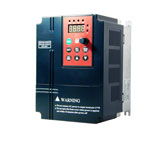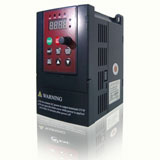How to make a correct repair of VFD?
If your goal is to be able to verify correct repair of a VFD power section, then testing at full load is not important. You need to stress the IGBT's at peak current. Many people do this by using a motor with a high inertia flywheel (or pulley) and setting a relatively fast acceleration and deceleration time. For instance, use your 11kW motor, if your VFD under test is higher in power then you must set a faster acceleration time to properly stress the IGBT's. If your VFD under test is smaller in power, then you would need to set a longer acceleration time to properly stress the IGBTs. Remember, the goal is to stress them, not cause them to fail.
What you're doing with a full-load test is verifying a proper repair. If the VFD will properly handle a short-term overload (rapid acceleration of an unloaded motor) then this will prove your repair was good. Or, lock the rotor of the motor and run the current up to full rated value. It's essentially the same test - will your VFD handle current and switch the transistors properly without giving out a loud "BANG!" and releasing the magic smoke.
Another thing to note as well, the resistive or inductive load bank requires no maintenance... unlike the pair of motors, you have bearings, couplings and the need for a shield should the coupler come apart while running.
Larger units in medium voltage can in some cases do line synchronization, and through some inductance connect the output of the VFD to the AC main and just recirculate power around the drive with the only real power consumption being that to make up for losses.
What you're doing with a full-load test is verifying a proper repair. If the VFD will properly handle a short-term overload (rapid acceleration of an unloaded motor) then this will prove your repair was good. Or, lock the rotor of the motor and run the current up to full rated value. It's essentially the same test - will your VFD handle current and switch the transistors properly without giving out a loud "BANG!" and releasing the magic smoke.
Another thing to note as well, the resistive or inductive load bank requires no maintenance... unlike the pair of motors, you have bearings, couplings and the need for a shield should the coupler come apart while running.
Larger units in medium voltage can in some cases do line synchronization, and through some inductance connect the output of the VFD to the AC main and just recirculate power around the drive with the only real power consumption being that to make up for losses.



